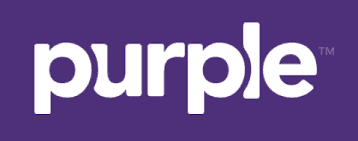Idea In Brief: Innovation is critical to sustained success, and disruption can come when you least expect it. Challenging your strategic assumptions is a great way to take an outsider's view to identify inventive opportunities and expose potential disruptive threats. Download my Ultimate Guide to Challenging Assumptions.
(2.5 Minute Read)
“It ain’t what you don’t know that gets you into trouble. It’s what you know for sure that just ain’t so.”
Mark Twain (maybe)
While it may be a matter of debate who should receive credit for this quote, there is no question the sentiment is profound.
Almost every strategic plan I've reviewed included a page of the assumptions underlying the plan. That is great! What would be even better is a section on what might happen if those assumptions weren't valid. What opportunities might be possible? What threats might exist, and what would be the response?
The whole objective of strategic planning is to get crystal clear on your purpose and to explore and identify the best ways to realize that vision. Innovation is crucial to this process.
Challenging assumptions and deeply-held beliefs about your business or industry will unearth innovative ideas. It's why disruption so often comes from outside the industry.
Disruptive companies don't confine themselves to the assumptions and limiting beliefs that are absolute truths to the industry insider.
Think like an outsider.
Companies Challenging Assumptions
How do you think like an outsider? I've got the perfect tool to help you do that. But first, let's consider a few examples of challenging industry assumptions.
Company
Assumption Challenged
Result

Consumers won't pay over $2K for stationary bikes.
Peloton combined streaming live videos subscription model with its stationary bikes, and by year 6, Peloton has reached $700M in sales and is valued at $4B. Oh, and they just launched $4k+ treadmills.

You can't scale a personal stylist business.
Using data and AI technology to provide personal styling services to the masses, Stichfix sold over $1B in apparel last year.

Mattresses must be sold in a retail environment where consumers can feel the product.
Purple's direct to consumer model supported by a 100 night refund period allows it to pass all distribution costs savings on to the consumer. The company is worth over $1B.
How To Challenge Assumptions
Here a few questions you can ask in challenging your strategic assumptions. (Be sure to download my Ultimate Guide to Challenging Assumptions in the link below.)
What are the generic business “tests” that a new concept, product, or business idea must pass to move forward in the organization? What are the assumptions underlying those requirements?
Look at the latest SWOT analysis. What are the assumptions behind what you consider to be internal strengths and weaknesses and external threats and opportunities?
Create a stakeholder list. Who are the stakeholders in the business, and what are the assumptions we make about their behaviors and needs?
TIP: Ask these questions with a team of diverse middle managers. Often the executive team can become too vested in the strategic assumptions. Middle management might be more open to the challenge, and they bring the added perspective that comes from being closer to the customer and market realities.
Download My FREE Template
I'll send you my Ultimate Guide to Challenging Assumptions and Template.
You'll love it!

Idea into Action
Use can use my guide in many situations, including the following:
-
Strategic Planning: Be sure to seek input from different levels and perspectives in the organization as well as people new to the organization. Consider gaining insight from vendors and other outside partners.
-
New Product Development: Use this guide on a smaller scale for new product development. What are the assumptions you are making about the product benefits, uses, and costs?
-
Acquisition Due Diligence: What are the assumptions that underlie the strategy for the acquisition? What if those assumptions are not valid? What would you do? Are there new opportunities? Are there new threats?
Innovation is critical to sustained success, and disruption can come when you least expect it. Challenging your strategic assumptions is a great way to take an outsider's view to identify inventive opportunities and expose potential disruptive threats.
Please share your thoughts with me on this, and if you've found this information helpful, you can help me get the word out by using the links provided and sharing it with a colleague. I'd love to hear your thoughts. Thanks!
Work well,


